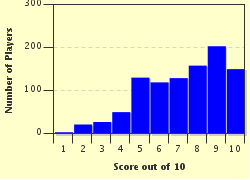Quiz Answer Key and Fun Facts
1. The Big Banana in Coffs Harbour is a (very unusual, but popular) tourist attraction which is just that- a very large banana. In which state of Australia is Coffs Harbour and the Big Banana?
2. In the mining town of Coober Pedy in South Australia, most residents make underground homes to avoid the heat that comes with living in the middle of the Australian outback. Quite unusual, don't you think? What is mined in Coober Pedy?
3. Australia is home to a creature so strange that when a sketch was sent to Britain, they thought the people who sent the sketch were joking. What is the name of this venomous monotreme that had its discoverers baffled?
4. Wave Rock is a popular tourist attraction. As its name suggests, it is a natural rock formation shaped like a breaking wave. It is just east of Hyden. Another nearby feature that is also interesting is Mulka's Cave. Where is Hyden?
5. Uluru in the Northern Territory is a sandstone rock. Not that impressive? Well, it is huge; in fact it is about 863 metres from the ground to its peak. Nearby are other impressive features collectively known as Kata Tjuta. What is Kata Tjuta also called?
6. What can be more wonderful than a beautiful, large, hugely bio-diverse coral reef? I'm talking, of course, about the Great Barrier Reef off the coast of Queensland. What is the name of the sea in which the Great Barrier Reef is located?
7. The Twelve Apostles are a collection of limestone rocks in Port Campbell National Park in Victoria. The funny thing is that there never were twelve of the rocks. How many were there since European settlement before one collapsed in 2005?
8. The capital city, Canberra, was built just to be the capital city. The reason for its existence is because two other cities wanted to be the capital, so they made a new city instead. Which two cities wanted to be the capital of Australia?
9. The strait between Victoria and Tasmania is famous for its wild and unpredictable weather. What is the name of the strait?
10. When I think of wild Australian things, I think of the Outback. This is, of course, the giant, dry and remote area around the middle of the mainland. Which city, sometimes called "The Capital of the Outback", is located near the border of South Australia in New South Wales and is an important mining city?
Source: Author
Daaanieeel
This quiz was reviewed by FunTrivia editor
Tizzabelle before going online.
Any errors found in FunTrivia content are routinely corrected through our feedback system.

